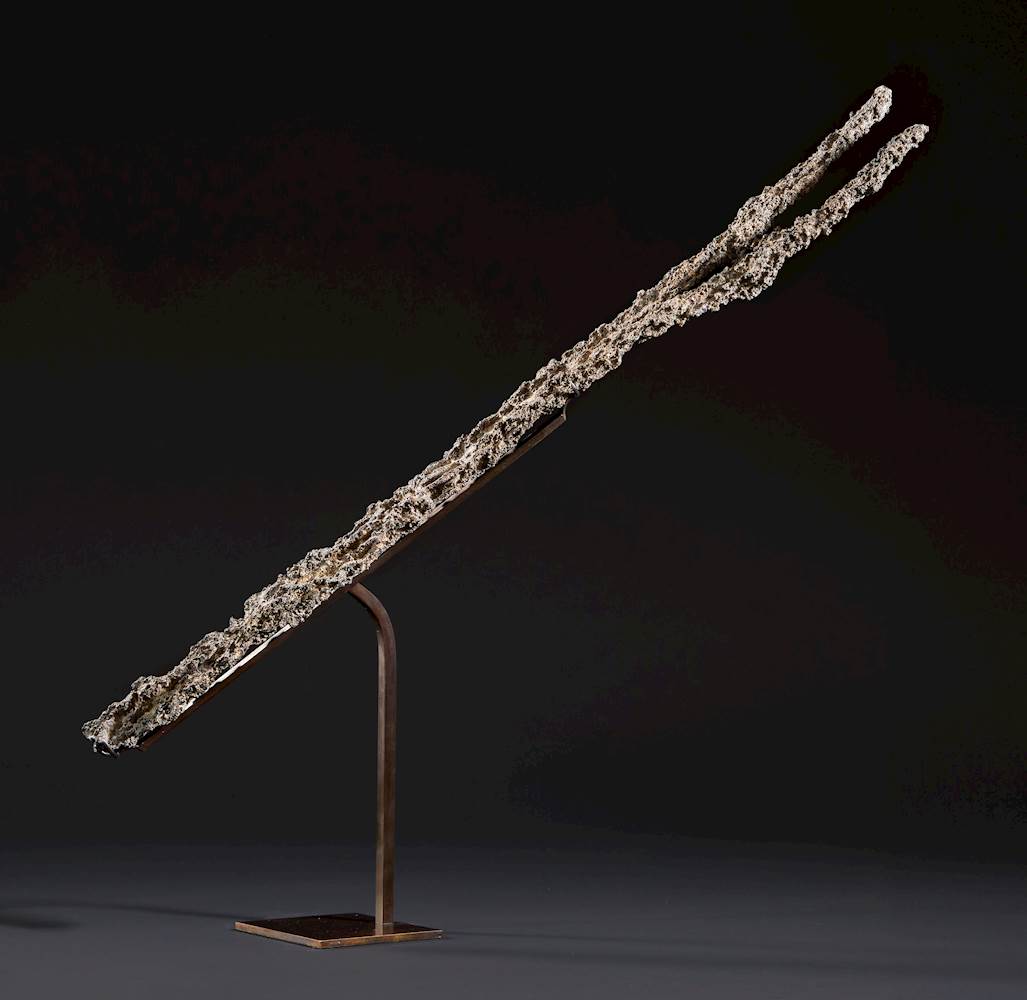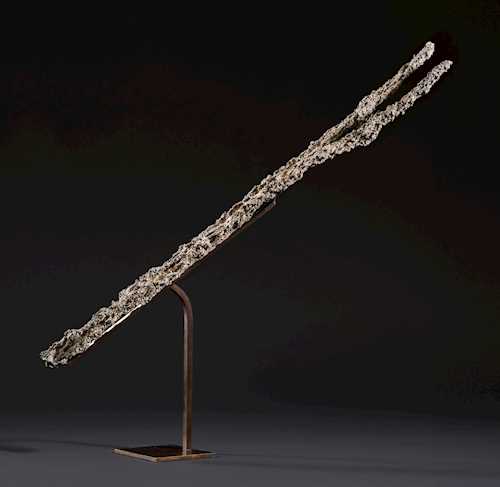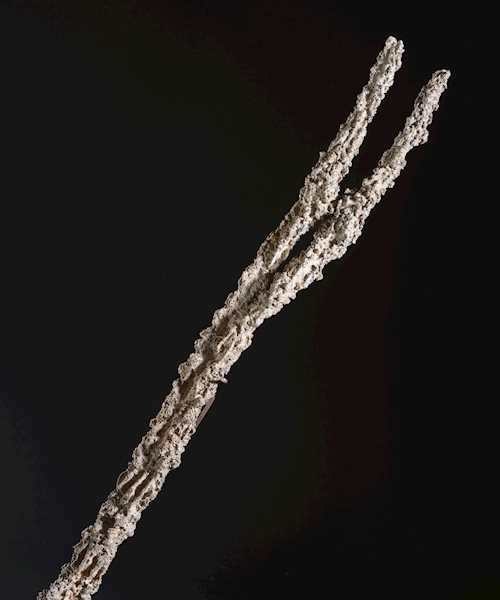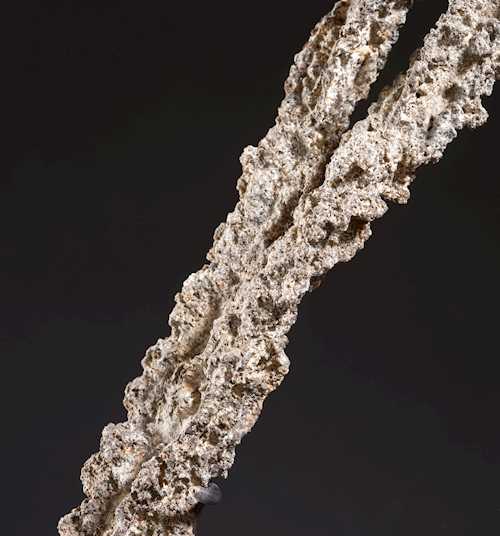
Lotto 4022* - A209 Out of This World - lunedì, 17. giugno 2024, 16h00
FORKED FULGURITE
Egypt, Western Desert
72 × 6.5 (widest) × 2.7 cm (measurements not including stand)
So-called ‘lightning bundles’ already served in the art of the Romans and Greeks as a symbol for the god of the heavens, who slung lightning bolts and ruled over gods and men. Both in appearance and in the manner in which they originated, fulgurites could be described as the natural equivalent of these symbols, which are usually carved from stone and consist of stylised lightning bolts, held by Zeus himself in statues made in his honour.
The fossilisation of lightning occurs so rarely that fulgurites were given as gifts to kings, such as Frederick Augustus of Saxony in 1822. The Leipzig professor of physics and chemistry L. W. Gilbert remarked around 1800 that he considered fulgurites as ‘by far the most interesting and greatest natural curiosity.’ Due to the exceptionally high temperatures created in the rock by the striking lightning, another highly interesting scientific feature of fulgurites is the presence of very rare minerals such as lechatelierite, a natural silica glass composed of amorphous silica. This mineral otherwise only occurs in impact craters and tectonically highly fractured rocks (mylonite).
The specimen presented here was found at the foot of sand dunes of the great sand sea in the Western Desert of Egypt. Its tubular shape is typical of lightning striking sand. Since fulgurites can usually only be excavated in fragments of 10-15 centimetres in length, this specimen is a true rarity due to its size and especially its unique form. With its dark colour and detailed filigree branching, it is a mysterious, fascinating product of an extraordinary natural phenomenon.
LIGHTNING TURNED TO GLASS
FORKED FULGURITE
When lightning strikes sand, it very rarely turns it into glass, in a shape which the ancients called 'Zeus's beard'. Yolanda Schicker-Siber and Christian Link discuss a piece that is extremely rare due to its large size.
CHF 8 000 / 12 000 | (€ 8 250 / 12 370)
Venduto per CHF 10 000 (incl. premio dell'acquirente)
Non si assume alcuna responsabilità per la correttezza di queste informazioni.







